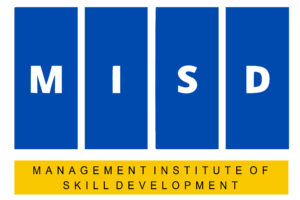What is Email Automation?
The use of software tools to automate email campaigns and workflows is referred to as email automation. Marketers can program a series of emails to be delivered to subscribers or customers at predefined intervals or in response to particular triggers or events by using email automation.
Email automation can help businesses save time and make their email campaigns more effective. Marketers can avoid the need for manual intervention by automating email workflows to make sure that their subscribers and clients receive timely and pertinent emails. This could boost conversion rates, engagement levels, and eventually income.
What are the benefits of automated email marketing?
Time-consuming processes like creating email lists, sending boilerplate messages, or manually scheduling events are all eliminated with email marketing automation. As a result, marketers and salespeople will have more time to work on demanding tasks (or cannot be fully automated).
Workflows, a preset, triggered set of actions you’re instructing your automation program to do for you, are the core of email marketing automation.
Let’s now examine how this procedure truly operates.
How to Automate Email Workflows
- Choose a solution for email marketing automation from the list of options on the market, which includes MailChimp, HubSpot, and ActiveCampaign. Choose the device that satisfies your needs and suits your budget.
- Set your objectives: Establish your objectives before you begin automating your email procedures. What do you hope to accomplish with your email marketing campaigns? Do you want to develop brand awareness, boost customer engagement, or increase sales?
- To use for your email campaigns, create a list of the email templates you plan to use. This includes emails sent as a welcome, promotions, abandoned cart notifications, and more.
- Define your target audience and segment your email list according to their interests, characteristics, and behavior.
- Create your email automation workflows: You may create your email automation workflows using the email marketing automation tool. This entails producing a series of emails that will be distributed to subscribers or clients at regular intervals or in response to certain triggers or occurrences.
- Personalize your email templates: Make sure your email templates reflect the style and tone of your brand. This includes your logo, font choice, and color scheme.
- Test your email automation workflows: To make sure your email automation workflows are operating as intended, test them before launching your email campaigns. You should test your email templates, triggers, and scheduling in this regard.
- Start your email campaigns: You can start your email campaigns once you have tested your email automation workflows. Follow up on your campaigns.
Email Marketing Automation Examples
Topic Workflows
Create a workflow for each subject that is linked to your industry and for which you produce content.
Consider yourself to be a unicorn breeder whose primary content themes are unicorn diets, gear, and boarding. After that, you might categorize your blog articles and content marketing offers (such as ebooks, webinars, kits, etc.) based on these themes. For each topic, you could also construct an email workflow that would be activated when one of your contacts viewed a page or downloaded an offer related to that topic.
Depending on a form submission from a conversion tool like HubSpot’s Free Marketing & Lead Generation Software, start a workflow for content download. Use the “Lead Flow Submission” to start an automated workflow in HubSpot.
Blog Subscriber Welcome Workflow
Send a blog welcome email to all of your brand-new blog readers to extend a warm welcome. Use this email to thank contacts for subscribing, remind them of the benefits of reading your blog, check their subscription preferences (and provide them with the opportunity to change them), and advertise your blog’s top posts or other deals.
(Get advice on how to write an effective blog welcome email here, and discover more about welcome email optimization here.)
New Customer Welcome/ Training Workflow
When we’re talking about warm welcomes, think about creating a series of welcome emails that you can send out when a contact becomes a paying client. These emails can be triggered whenever the contact’s life cycle stage is changed to “customer.”
This is not only a fantastic way to start a new client relationship off well, but it can also keep your customers interested even after they make a purchase. Also, if your product or service necessitates some client training, take advantage of this approach to gradually provide useful training resources.
Engaged Contact/ Evangelist Workflow
Make a dynamic, intelligent list that constantly refreshes with the contacts you’ve interacted with.
Use trigger factors, such as a high threshold of website visits, clicks on your emails or social media postings, or form submissions, to generate this list. Then develop an email routine to make use of this list and promote your best content on social media.
These connections are already very invested in you, so they are more likely to share your best content. To maximize the influence of those social media influencers in your database, you may also think about adding list criteria to only include contacts with a specified number of Twitter followers.
Lead Nurturing Workflow
Contact may be ready for a little more if they have downloaded several of your introductory marketing items, such as webinars and ebooks. Establish procedures to move these contacts through the flywheel.
Send emails with additional content that can elevate the contact to a marketing qualified lead (MQL) or an opportunity in your sales process if they are a lead.
This pipeline may comprise articles and web pages that you’ve found to help turn leads into customers through a study of your attribution report; these might be things like customer success stories or case studies, free trial offers, or product demonstrations.

